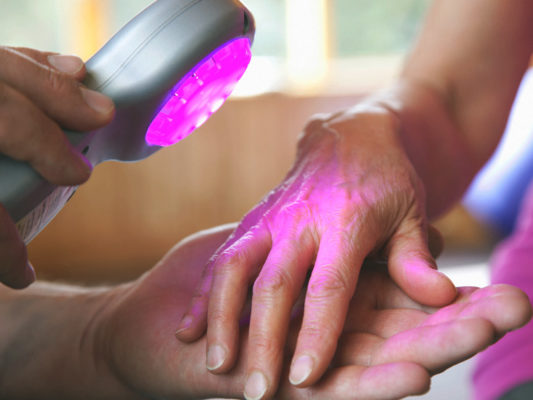Skin cancer occurs when skin cells start growing abnormally and cause cancerous growth. Most skin cancers develop on the visible outer layer of the skin (the epidermis), particularly in sun-exposed areas such as the face, head, hands, arms, and legs. It is usually easy to detect by examining the skin, and early detection increases the chances of early treatment and survival.
Almost all skin cancers start as small, low-risk lesions, but can grow and become high-risk lesions if left untreated.
Types of Skin Cancer
The three main types of skin cancer are basal cell carcinoma, squamous cell carcinoma, and melanoma.
Melanoma
Melanoma is the most alarming type because it has a higher risk of invading surrounding tissues or spreading to other parts of the body (metastasis) before being detected. This form of skin cancer can appear in a variety of forms such as unusual pigment changes, areas that look like bruises but are not healing, and irregular moles.
Basal Cell Carcinoma (BCC)
Basal cell carcinoma is the most common type of skin cancer. It often appears as a pearly growth in sun-exposed skin that bleeds easily and does not heal. These lesions appear in a variety of shapes, colors, and textures. BCC’s occur when a mutation in the basal cells’ DNA causes them to multiply instead of dying off in their natural cycle. As the basal cells build up, they form lesions that can become carcinomas. The DNA mutation causing this cell build-up is typically due to UV radiation from either sunlight or tanning beds.
Squamous Cell Carcinoma
Squamous cell carcinoma is the second most common type. It can appear in a variety of forms but often progress from a red scaly patch to a raised, red growth. These also can appear growing out of an existing scar or lesion. Similar to BCC’s, these carcinomas form when a mutation occurs in cells that causes the overproduction of cells. This mutation leads to a build-up of cells that may become cancerous. SCC’s also typically form as a result of UV radiation.
Skin Cancer Treatment
There are several different types of skin cancer, and in general, the treatment plan is based on tumor location, size, characteristics under the microscope, and the risk of it spreading to another location or growing again (recurring) in the same location. Skin cancers that are likely to spread or recur are treated more aggressively.
Skin cancer treatment options may include procedures including excision, electrodesiccation-curettage, and Mohs Surgery.
Skin cancer prevention and treatment is a top priority at Bend Dermatology and our Providers work closely with you to select a treatment method best suited for your specific case.
It’s also important to get an annual skin exam to help catch any issues or concerns sooner.
You can schedule an appointment with one of our Dermatologists in our Central Oregon area locations to get examined or discuss skin cancer treatment recommendations.











